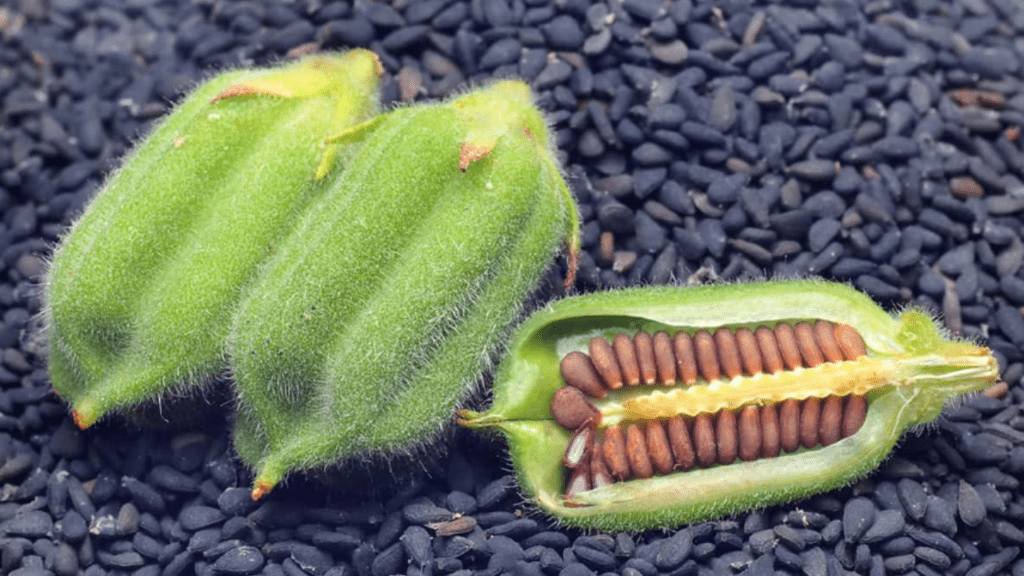
How to Grow Sesame Plant Seeds: A Step-by-Step Guide
Growing sesame plant seeds can be a rewarding and enjoyable experience, whether you’re a seasoned gardener or just starting out. Sesame seeds are not only nutritious, but they are also a versatile crop that can be used in a variety of culinary dishes. In this step-by-step guide, we will walk you through the process of successfully growing sesame plant seeds, from selecting the right location to harvesting your crop. Whether you have a green thumb or not, this guide will provide all the information you need to cultivate your own sesame plant seed. So, let’s get started!
Sesame plant seeds are a valuable crop that can be grown in a variety of climates. They are known for their high oil content and are commonly used in cooking, baking, and as a topping for various dishes. When it comes to growing sesame plant seeds, it’s important to choose the right location for planting. Sesame plants thrive in warm climates with well-drained soil and plenty of sunlight. It’s best to sow the seeds directly into the ground, as they do not transplant well. Make sure to space the seeds about 12 inches apart and keep the soil moist but not waterlogged. As the plants grow, it’s important to keep an eye out for pests and diseases, and to provide support for the plants if they start to lean or fall over. Once the seeds are mature and ready for harvest, simply cut the plants at the base and hang them upside down to dry. Once the seeds are fully dried, they can be threshed and stored for later use. Growing sesame plant seeds can be a fun and rewarding experience for any gardener, and with the right care and attention, you can enjoy a bountiful harvest of nutritious seeds.
Table of Contents
ToggleUnderstanding Sesame Plants
Sesame plants are hardy and thrive in warm climates with well-drained soil and plenty of sunlight. It’s best to sow the seeds directly into the ground, as they do not transplant well. When planting sesame seeds, make sure to space them about 12 inches apart and keep the soil moist but not waterlogged. As the plants grow, it’s important to keep an eye out for pests and diseases, and to provide support for the plants if they start to lean or fall over. Once the seeds are mature and ready for harvest, simply cut the plants at the base and hang them upside down to dry. Once the seeds are fully dried, they can be threshed and stored for later use. Growing sesame plant seeds can be a fun and rewarding experience for any gardener, and with the right care and attention, you can enjoy a bountiful harvest of nutritious seeds.
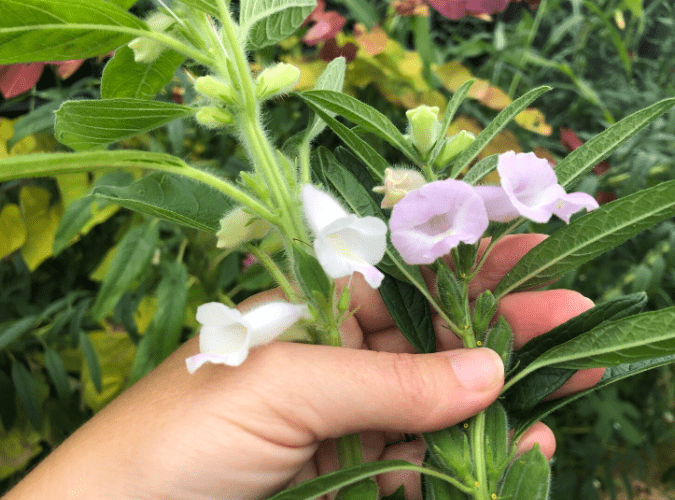
Describe the sesame plant, its characteristics, and varieties.
Sesame plants are known for their hardiness and ability to thrive in warm climates with well-drained soil and plenty of sunlight. They are annual flowering plants that can grow to be about 3-6 feet tall and have white, pink, or purple flowers. There are two main varieties of sesame plants: the white-seeded variety, which is commonly used for its oil production, and the black-seeded variety, which is often used for its nutritional value.
When planting sesame seeds, it’s best to sow them directly into the ground as they do not transplant well. It’s important to space the seeds about 12 inches apart and keep the soil moist but not waterlogged. As the plants grow, it’s important to keep an eye out for pests and diseases, and provide support for the plants if they start to lean or fall over.
Once the seeds are mature and ready for harvest, simply cut the plants at the base and hang them upside down to dry. Once the seeds are fully dried, they can be threshed and stored for later use. Sesame seeds are a good source of protein, healthy fats, and various vitamins and minerals, making them a nutritious addition to any diet.
Overall, growing sesame plant seeds can be a fun and rewarding experience for any gardener, and with the right care and attention, you can enjoy a bountiful harvest of nutritious seeds.
Discuss the historical and modern uses of sesame seeds in cooking, medicine, and industry.
Sesame seeds have a long history of use in cooking, medicine, and industry. They have been cultivated for thousands of years and are a staple ingredient in many cuisines around the world. In cooking, sesame seeds are commonly used to add flavor and texture to dishes, such as in the form of sesame oil, tahini, or sprinkled on top of breads and pastries. They are also used to make sesame paste and are a key ingredient in popular dishes like hummus and halva. In traditional medicine, sesame seeds have been used to treat various ailments, such as digestive issues and skin conditions. They are believed to have anti-inflammatory and antioxidant properties, making them a valuable component of natural medicine. In the industry, sesame seeds are used to produce sesame oil, which is widely used in cooking and as a flavoring agent. Additionally, sesame seeds are used in the production of soaps, cosmetics, and pharmaceuticals due to their beneficial properties. Overall, sesame seeds have a rich historical and modern use in various aspects of life and continue to be a versatile and valuable ingredient in many cultures.
Benefits of Growing Sesame Plants from Seeds
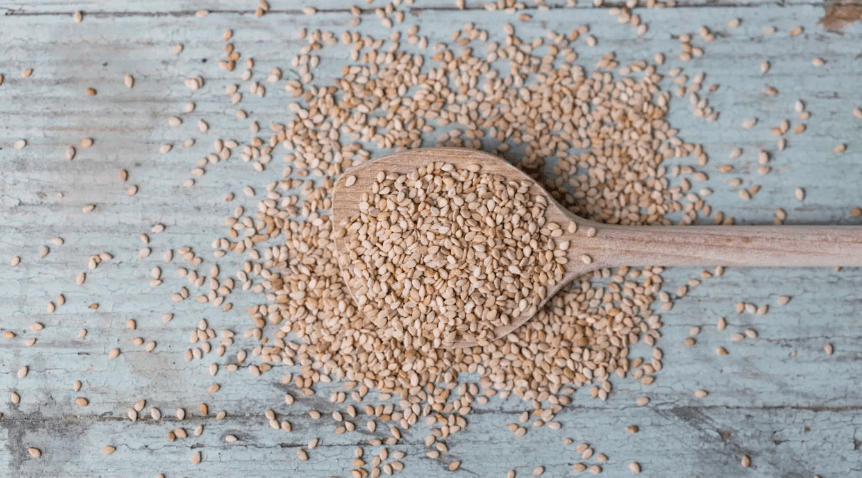
Highlight the advantages of growing sesame plants from seeds versus buying pre-grown plants.
Growing sesame plants from seeds has several advantages over buying pre-grown plants. First, starting from seeds allows you to have full control over the growing process, from the initial planting to the eventual harvest. This gives you the opportunity to ensure that the plants receive the proper care and attention they need to thrive. Additionally, growing sesame plants from seeds is a cost-effective option, as seeds are generally more affordable than pre-grown plants. It also provides you with the satisfaction of watching the plants grow from the very beginning and knowing that you played a part in their development. Furthermore, starting from seeds gives you the flexibility to choose the specific variety of sesame plant that you want to grow, ensuring that it meets your individual needs and preferences. Overall, growing sesame plants from seeds can be a rewarding and beneficial experience for any avid gardener.
Mention the sustainability, cost-effectiveness, and personal satisfaction of starting from seeds.
Growing sesame plants from seeds has several advantages over buying pre-grown plants. First, starting from seeds allows you to have full control over the growing process, from the initial planting to the eventual harvest. This gives you the opportunity to ensure that the plants receive the proper care and attention they need to thrive. Additionally, growing sesame plants from seeds is a cost-effective option, as seeds are generally more affordable than pre-grown plants. It also provides you with the satisfaction of watching the plants grow from the very beginning and knowing that you played a part in their development. Furthermore, starting from seeds gives you the flexibility to choose the specific variety of sesame plant that you want to grow, ensuring that it meets your individual needs and preferences. Overall, growing sesame plants from seeds can be a rewarding and beneficial experience for any avid gardener. Not only is it a sustainable practice, but it also allows for personal satisfaction and cost-effectiveness.
Selecting the Right Sesame Plant Seeds
Provide tips on choosing high-quality sesame plant seeds.
When it comes to choosing high-quality sesame plant seeds, there are a few key factors to consider. First, it’s important to look for seeds that are from a reputable supplier or source. This will ensure that the seeds are of good quality and have been properly stored to maintain their viability.
Additionally, look for seeds that are uniform in size and shape, as this can indicate that they are from a healthy and well-maintained crop. It’s also a good idea to choose seeds that are free from any signs of mold, discoloration, or damage, as these may indicate poor quality or potential disease.
When selecting sesame plant seeds, consider the specific variety or cultivar that you want to grow. Different varieties may have different traits, such as drought tolerance, disease resistance, or flavor profile, so choose seeds that align with your desired characteristics.
Lastly, consider the age of the seeds. Fresh seeds will generally have a higher germination rate, so it’s best to choose seeds that are as fresh as possible.
By taking these factors into consideration, you can ensure that you are choosing high-quality sesame plant seeds that will give you the best chance of a successful and bountiful harvest.
Discuss where to buy sesame plant seeds (online stores, nurseries, etc.).
When looking to buy sesame plant seeds, there are several options available. You can find them in online stores that specialize in gardening and agriculture, as well as in local nurseries and garden centers. Online stores offer a wide variety of options and the convenience of having the seeds delivered right to your door. Nurseries and garden centers may also have a selection of sesame plant seeds, and the advantage of being able to speak with knowledgeable staff who can offer advice and recommendations. When purchasing sesame seeds, it’s important to look for seeds that are uniform in size and shape, free from any signs of mold or damage, and from a reputable source. Consider the specific variety or cultivar you want to grow, as different varieties may have different traits. Additionally, opt for fresh seeds to ensure a higher germination rate. By considering these factors, you can find high-quality sesame plant seeds for a successful harvest.
Preparing for Planting
Detail the steps to prepare the soil and planting area for sesame seeds.
When preparing the soil for planting sesame seeds, it’s important to choose a location with well-draining soil and full sunlight. Begin by clearing the area of any debris, rocks, or weeds that may hinder seed germination or plant growth. Loosen the soil to a depth of about 12 inches, either using a garden fork or a tiller, to create a loose, well-aerated planting bed. Once the soil is prepared, incorporate organic matter such as compost or well-rotted manure to improve soil fertility and structure. This will provide essential nutrients for the sesame plants as they grow. Additionally, it’s recommended to perform a soil test to determine the soil pH and nutrient levels, and make any necessary amendments based on the results. After the soil is prepared, create rows or planting furrows about 1/4 to 1/2 inch deep and sow the sesame seeds at a spacing of about 8 to 10 inches apart. Cover the seeds lightly with soil and water the area thoroughly. Keep the soil consistently moist, but not waterlogged, until the seeds germinate and the seedlings establish themselves. With proper soil preparation and planting techniques, you can set the stage for successful sesame seed growth and yield.
Explain the importance of soil quality, drainage, and sunlight.
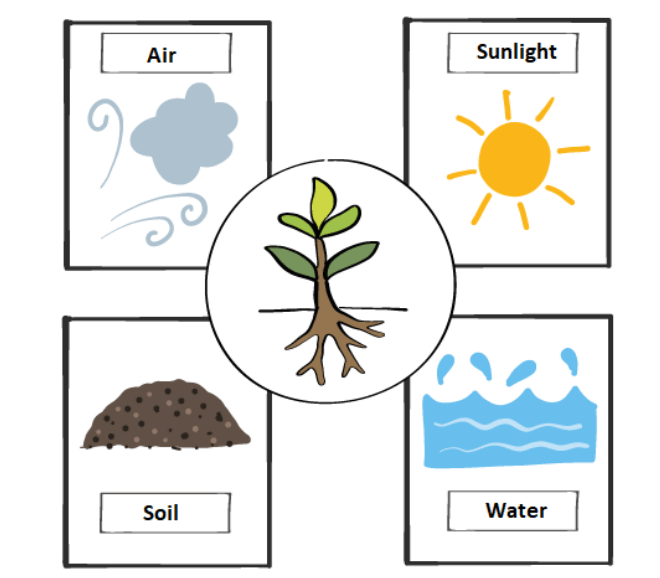
Soil quality, drainage, and sunlight are all crucial factors in the successful growth of sesame plants. Good soil quality is essential for providing the necessary nutrients and support for plant growth. It’s important to have well-draining soil to prevent waterlogging, as sesame plants do not thrive in waterlogged conditions. Adequate sunlight is also crucial for the growth and development of sesame plants, as they require full sun for optimal growth.
When it comes to soil preparation, it’s important to incorporate organic matter such as compost or well-rotted manure to improve soil fertility and structure. This will provide essential nutrients for the sesame plants as they grow. Additionally, performing a soil test to determine the soil pH and nutrient levels can help in making any necessary amendments based on the results.
Proper planting techniques are also important for the successful growth of sesame plants. Creating rows or planting furrows at the right depth and spacing the seeds appropriately can help in ensuring optimal growth conditions for the sesame plants. Keeping the soil consistently moist, but not waterlogged, until the seeds germinate and the seedlings establish themselves is also crucial for their growth.
Overall, paying attention to soil quality, drainage, and sunlight is essential for setting the stage for successful sesame seed growth and yield. By ensuring these factors are well-managed, you can increase the chances of a successful harvest.
How to Plant Sesame Seeds
Step-by-step guide on how to plant sesame seeds.
Planting sesame seeds requires proper preparation of the soil. Begin by tilling the soil to a depth of 8-10 inches and removing any weeds or debris. You can then add organic matter, such as compost or aged manure, to provide essential nutrients for the sesame plants as they grow. Additionally, performing a soil test to determine the soil pH and nutrient levels can help in making any necessary amendments based on the results.
Proper planting techniques are also important for the successful growth of sesame plants. Create rows or planting furrows at a depth of 1/2 inch and space the seeds 12-18 inches apart. It’s important to ensure that the seeds have good soil-to-seed contact for optimal germination.
After planting, keep the soil consistently moist, but not waterlogged, until the seeds germinate and the seedlings establish themselves. Once the sesame plants have sprouted and are growing, ensure they receive full sunlight and provide regular watering, especially during dry periods.
Throughout the growing season, monitor the plants for any signs of pests or diseases and take appropriate measures to address any issues that may arise.
By paying attention to soil quality, drainage, and sunlight, you can set the stage for successful sesame seed growth and increase the chances of a bountiful harvest.
Tips on spacing, depth, and watering during the initial planting phase.
When planting sesame seeds, it is important to pay attention to spacing, depth, and watering to ensure successful growth. Create rows or planting furrows at a depth of 1/2 inch and space the seeds 12-18 inches apart to allow for proper root development and optimal growth. It’s crucial to ensure that the seeds have good soil-to-seed contact for optimal germination. After planting, keep the soil consistently moist, but not waterlogged, until the seeds germinate and the seedlings establish themselves. Once the sesame plants have sprouted and are growing, ensure they receive full sunlight and provide regular watering, especially during dry periods, to promote healthy growth and development. Throughout the growing season, monitor the plants for any signs of pests or diseases and take appropriate measures to address any issues that may arise. By paying attention to soil quality, drainage, and sunlight, you can set the stage for successful sesame seed growth and increase the chances of a bountiful harvest. By following these planting tips, you can ensure that your sesame plants have the best opportunity for successful growth and development.
Caring for Sesame Plants
Detailed care guide including watering, fertilizing, and pest control.
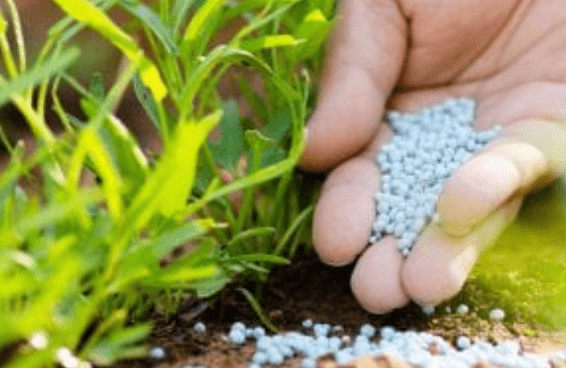
When planting sesame seeds, it’s important to create rows or planting furrows at a depth of 1/2 inch and space the seeds 12-18 inches apart to allow for proper root development and optimal growth. Good soil-to-seed contact is crucial for optimal germination. After planting, keep the soil consistently moist, but not waterlogged, until the seeds germinate and the seedlings establish themselves. Once the sesame plants have sprouted and are growing, ensure they receive full sunlight and provide regular watering, especially during dry periods, to promote healthy growth and development. Throughout the growing season, monitor the plants for any signs of pests or diseases and take appropriate measures to address any issues that may arise. By paying attention to soil quality, drainage, and sunlight, you can set the stage for successful sesame seed growth and increase the chances of a bountiful harvest. By following these planting tips, you can ensure that your sesame plants have the best opportunity for successful growth and development.
Tips on supporting and maintaining the plants as they grow.
When planting sesame seeds, it’s important to create rows or planting furrows at a depth of 1/2 inch and space the seeds 12-18 inches apart to allow for proper root development and optimal growth. Good soil-to-seed contact is crucial for optimal germination. After planting, keep the soil consistently moist, but not waterlogged, until the seeds germinate and the seedlings establish themselves. Once the sesame plants have sprouted and are growing, ensure they receive full sunlight and provide regular watering, especially during dry periods, to promote healthy growth and development. Throughout the growing season, monitor the plants for any signs of pests or diseases and take appropriate measures to address any issues that may arise. By paying attention to soil quality, drainage, and sunlight, you can set the stage for successful sesame seed growth and increase the chances of a bountiful harvest. By following these planting tips, you can ensure that your sesame plants have the best opportunity for successful growth and development.
Common issues and how to address them, such as diseases and pests.
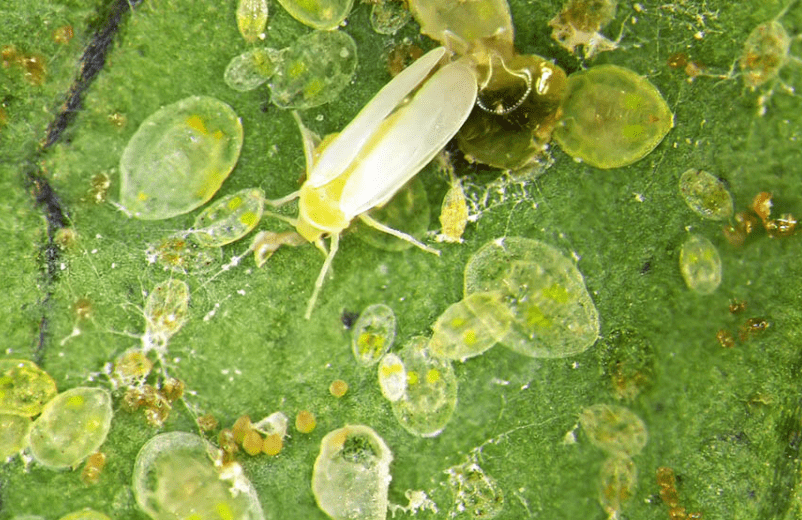
When planting sesame seeds, it’s important to create rows or planting furrows at a depth of 1/2 inch and space the seeds 12-18 inches apart to allow for proper root development and optimal growth. Good soil-to-seed contact is crucial for optimal germination. After planting, keep the soil consistently moist, but not waterlogged, until the seeds germinate and the seedlings establish themselves. Once the sesame plants have sprouted and are growing, ensure they receive full sunlight and provide regular watering, especially during dry periods, to promote healthy growth and development. Throughout the growing season, monitor the plants for any signs of pests or diseases and take appropriate measures to address any issues that may arise. By paying attention to soil quality, drainage, and sunlight, you can set the stage for successful sesame seed growth and increase the chances of a bountiful harvest. By following these planting tips, you can ensure that your sesame plants have the best opportunity for successful growth and development.
Harvesting Sesame Seeds
Sesame seeds are ready for harvest when the plants have turned brown and the leaves have fallen off. To harvest the seeds, cut the entire plant at the base and hang it upside down in a warm, dry place to dry out the seed pods. Once the pods are completely dry, you can thresh them to release the seeds. After threshing, you can winnow the seeds to remove any remaining plant material. Finally, store the seeds in a cool, dry place until you are ready to use them. With proper harvesting and storage, you can enjoy the benefits of fresh, nutritious sesame seeds in your cooking and baking.
Extracting and Saving Sesame Seeds
By following these planting tips, you can ensure that your sesame plants have the best opportunity for successful growth and development. When it comes time to harvest your sesame seeds, wait until the plants have turned brown and the leaves have fallen off. Then, you can cut the entire plant at the base and hang it upside down in a warm, dry place to dry out the seed pods. Once the pods are completely dry, you can thresh them to release the seeds and then winnow the seeds to remove any remaining plant material. After that, store the seeds in a cool, dry place until you are ready to use them. Proper harvesting and storage will allow you to enjoy the benefits of fresh, nutritious sesame seeds in your cooking and baking.
Common Problems and Solutions
One common problem with growing sesame seeds is the potential for disease and pests. To prevent this, it’s important to plant sesame seeds in well-drained soil and to rotate your crops to reduce the risk of disease. Additionally, you can use natural methods to control pests, such as introducing beneficial insects or using organic pest control products.
Another common issue is poor germination of sesame seeds. To address this, make sure to plant your seeds in warm soil and keep the area well-watered. You can also soak the seeds in warm water for a few hours before planting to help improve germination rates.
Overall, with proper care and attention to planting, harvesting, and storage, you can successfully grow and enjoy the benefits of fresh sesame seeds in your cooking and baking.
In conclusion, growing sesame plant seeds can be a rewarding and fulfilling experience. By following the step-by-step guide provided in this post, you can successfully cultivate this nutritious and versatile crop in your garden. With proper care and attention, you can enjoy a bountiful harvest of sesame seeds that can be used in a variety of culinary dishes and provide numerous health benefits. Happy planting!
Frequently asked questions And Answer
Sesame plants thrive in well-draining, sandy loam soil with a neutral pH level.
Sesame plants require regular watering, especially during dry periods. However, it’s important to avoid overwatering, as this can lead to root rot.
Sesame seeds should be planted in the spring, after the last frost has passed and the soil has warmed up.
Sesame plants require full sun, so it’s best to plant them in an area that receives at least 6-8 hours of sunlight per day.
Sesame seeds typically germinate within 5-10 days after planting.
Yes, sesame plants benefit from regular fertilization with a balanced fertilizer, especially during the growing season
Sesame seeds are ready for harvest when the plant’s leaves turn yellow and the seed pods begin to crack open. This typically occurs around 90-120 days after planting.
Sesame plants are sensitive to frost, so it’s important to plant them after the last frost and harvest them before the first frost in the fall.
